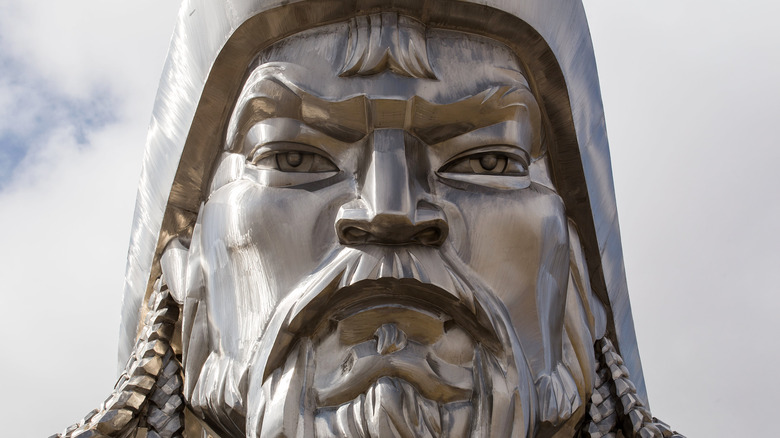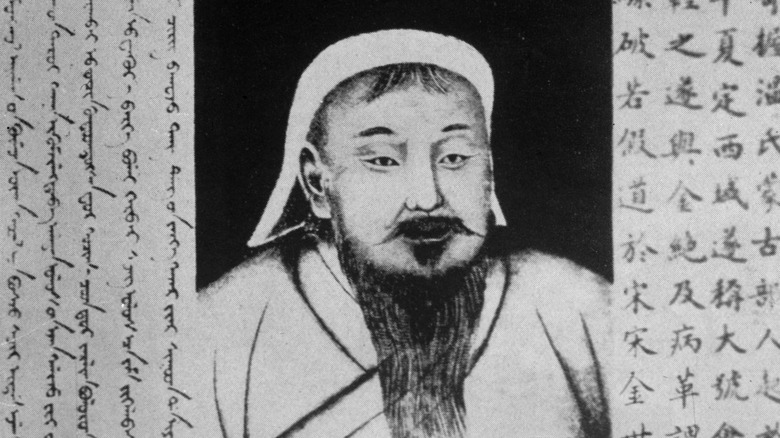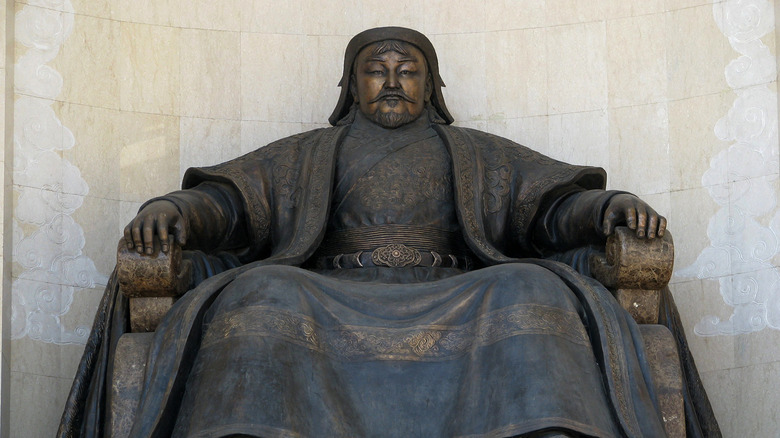What Happened After Genghis Khan Died?
On August 18, 1227, infamous Mongol emperor Genghis Khan died in an army camp during an onslaught on the Chinese kingdom Xi Xia, according to History. His death marked the end of a reign that transformed much of the ancient world and that irrevocably shaped the trajectory of the future.
During his lifetime, Genghis Khan successfully united all the nomadic Mongol tribes, creating a disciplined and ruthless military state in the process. Following his consolidation of the Mongol empire, Genghis Khan embarked on a lifelong mission to conquer and rule as much territory as possible. Under Genghis Khan, the Mongol Empire conquered a 12-million-mile stretch of land, the largest contiguous empire of all time, according to National Geographic. The invasions he spearheaded are infamous now for their brutality, according to Britannica.
Born the son of a warlord, Genghis Khan lost everything as a child but built up his reign through a series of strategic alliances, per History Extra. From there, he built an empire through a combination of military genius, organization, and a willingness to spill blood.
On his deathbed, Genghis Khan orders his troops to fight for world domination
By 1225, the Mongols had essentially successfully conquered central Asia. But Genghis Khan refused to give up on his dream of conquering the world, and at around age 60, he pushed his troops deeper into China, according to History.
But he fell ill before the siege, most likely with the bubonic plague, per Science Direct, and died in camp days later. On his deathbed, Khan ordered his troops to completely destroy the kingdom of Xi Xia and urged them to continue conquering as much of the world as possible. According to legend, per Tingroom, his last words were "I have conquered for you a large empire. But my life was too short to take the whole world. That I leave to you."
Determined to follow their leader's last wishes, Khan's armies annihilated the city, murdering or enslaving all of its occupants, per History. Meanwhile, Khan had ordered his troops to keep his death a secret, and anyone who spotted the funeral procession on its way back to the Mongol capital Karakorum was killed on the spot.
Genghis Khan's legend and empire grow after his death
Following Khan's death, the title of Great Khan of the Mongol empire was taken by Khan's third son, Ögödei. The sprawl of the Mongol empire was split between his sons, Chagatai, Ögödei, Tolui, and Jöchi, who was succeeded by his son Batu, per Britannica.
The empire Khan had created soon stretched from the Pacific Coast of China to Eastern Europe. Under Ögödei, the Mongols completely took control of the Silk Road, the main trade route that connected Europe to East Asia. This led to an era of relative stability called the Pax Mongolica, or "Mongol peace," which lasted through the 14th century until the bubonic plague catalyzed its decline in the mid-1300s, according to National Geographic.
Of course, the Pax Mongolica was not peaceful for those being conquered by the empire — and Ögödei and his successors certainly continued Genghis Khan's legacy, taking over China, Persia, and most of Russia.
Though the Mongol empire eventually fell, Genghis Khan's legacy lives on — and his DNA does, too. In fact, Genghis Khan's massive harem and fruitful love life ensured his genes would live on forever. Per The Guardian, In 2003, an international team of geneticists found that 1 in 200 men living today is a direct descendant of Genghis Khan.


